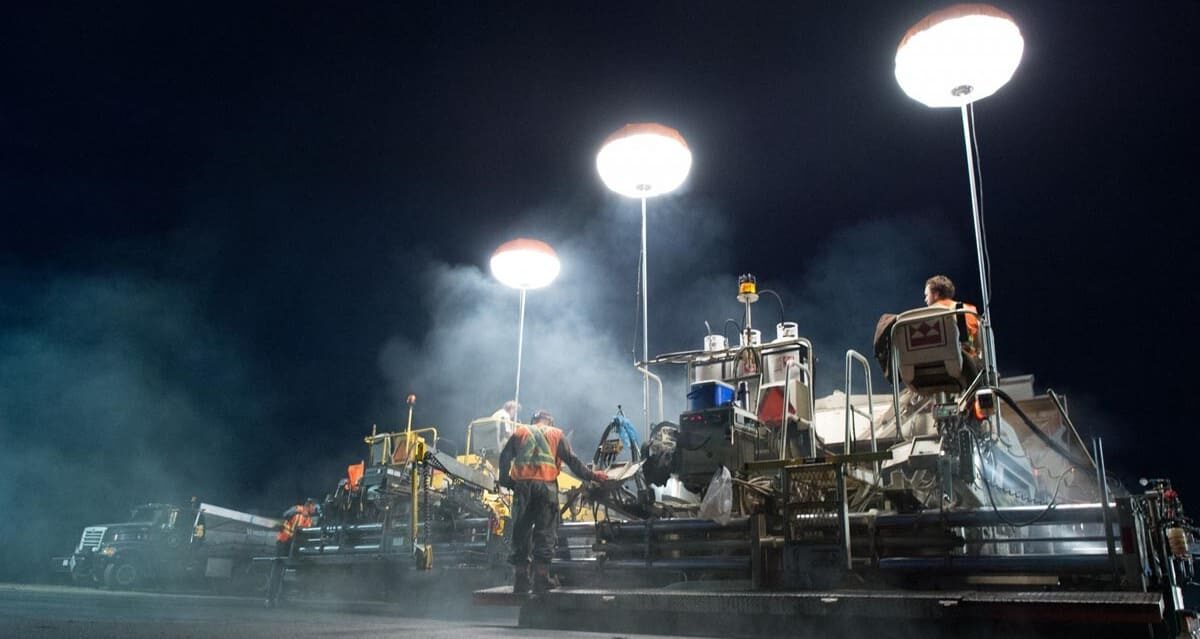Bad weather ruins visibility and can shut down outdoor work—but balloon construction lights are built for just that.
Yes, balloon construction lights are safe to use in rain or wind when properly rated, as most models are built with waterproof1, wind-resistant materials and IP652 or higher certifications.

When the weather turns, crews still need to work. Floodlights often fail or flicker. But balloon construction lights are designed to handle tough conditions. I’ve used them during rainstorms and high winds—what mattered was choosing a model with a solid IP rating and durable base. They stayed upright and kept lighting the site.
What Is the Weather Resistance Rating for Balloon Construction Lights?
Poor visibility and flickering lights create dangerous worksites in bad weather.
Balloon construction lights with an IP65 or higher rating are waterproof and dustproof, making them reliable in both rain and wind.

The Ingress Protection (IP) rating is the most important number to check. An IP65-rated light is completely sealed against dust and protected from low-pressure water jets from all directions. That means it can handle steady rain without failure. Most professional-grade balloon lights also have wind resistance3 features like guy wires, wide tripods, or weighted bases.
Here’s what the ratings mean:
| IP Rating | Protection Level | Suitable For |
|---|---|---|
| IP44 | Splash-resistant | Light drizzle only |
| IP54 | Limited water resistance | Mild outdoor use |
| IP65 | Dustproof and water-safe | Construction in the rain |
| IP66/67 | High-pressure and submersible | Extreme conditions |
I always go for IP65 minimum. During one late-night highway job, we got hit with a thunderstorm. The Moonlightia Pro light we used kept going, while another team’s metal-halide tower had to be shut off and covered.
Can Balloon Lights Withstand High Winds?
Strong winds can topple equipment and endanger workers if the lighting setup isn’t stable.
Yes, many balloon construction lights are designed to handle wind speeds up to 45–60 km/h when secured properly with anchors or weighted bases.

Most models come with stability systems. For example, Moonlightia’s inflatable towers have guy rope anchors and a broad base. I’ve set these up in open, windy job zones and they stayed upright even as the wind picked up. They’re low-profile when deflated and easy to reposition when needed.
Important features to look for:
- Inflatable or telescoping base – for flexibility and wind resistance
- Anchor ropes and weights – to prevent tipping in gusts
- Compact balloon shape – reduces wind drag compared to open reflectors
Some models, like the SeeDevil G3 series, also include reinforced tripods and sandbag attachments. These are essential when you're lighting bridges or road shoulders where gusts come without warning.
| Stability Feature | Function |
|---|---|
| Wide tripod/weighted base | Adds balance in uneven ground |
| Guy wires | Anchors the light tower in high wind |
| Low wind profile | Reduces risk of tipping or swinging |
| IP65-rated enclosures | Keeps electronics dry and functioning |
Are There Any Special Precautions for Stormy Conditions?
Even rugged lighting needs the right handling in a storm.
Balloon lights should be unplugged during lightning storms and checked regularly during extended rain to prevent any water pooling or strain on cables.

I’ve learned the hard way that even tough lights have limits. One time, we didn’t drain water from a slight dip in the site—pooling near the base eventually shorted a cable. Now I always double-check placement. Use cable covers or raised mounts, especially if working through continuous rainfall. Also, always unplug during electrical storms—even IP-rated lights can’t protect against a lightning strike.
Here’s a quick safety checklist:
- ✔ Secure cables above ground
- ✔ Anchor the base or tripod
- ✔ Use GFCI outlets and surge protectors
- ✔ Power off during lightning
- ✔ Inspect connectors regularly for water seepage
Conclusion
Balloon construction lights with proper IP ratings and anchors are safe and reliable in rain or wind, making them ideal for all-weather road work.
-
Explore the waterproof features of balloon construction lights to ensure they perform well in rainy conditions, keeping your worksite safe and illuminated. ↩
-
Understanding the IP65 rating is crucial for ensuring safety and reliability in adverse weather conditions. Explore this link to learn more about it. ↩
-
Discover how balloon construction lights are engineered to withstand high winds, ensuring safety and functionality on job sites. Click to learn more! ↩




